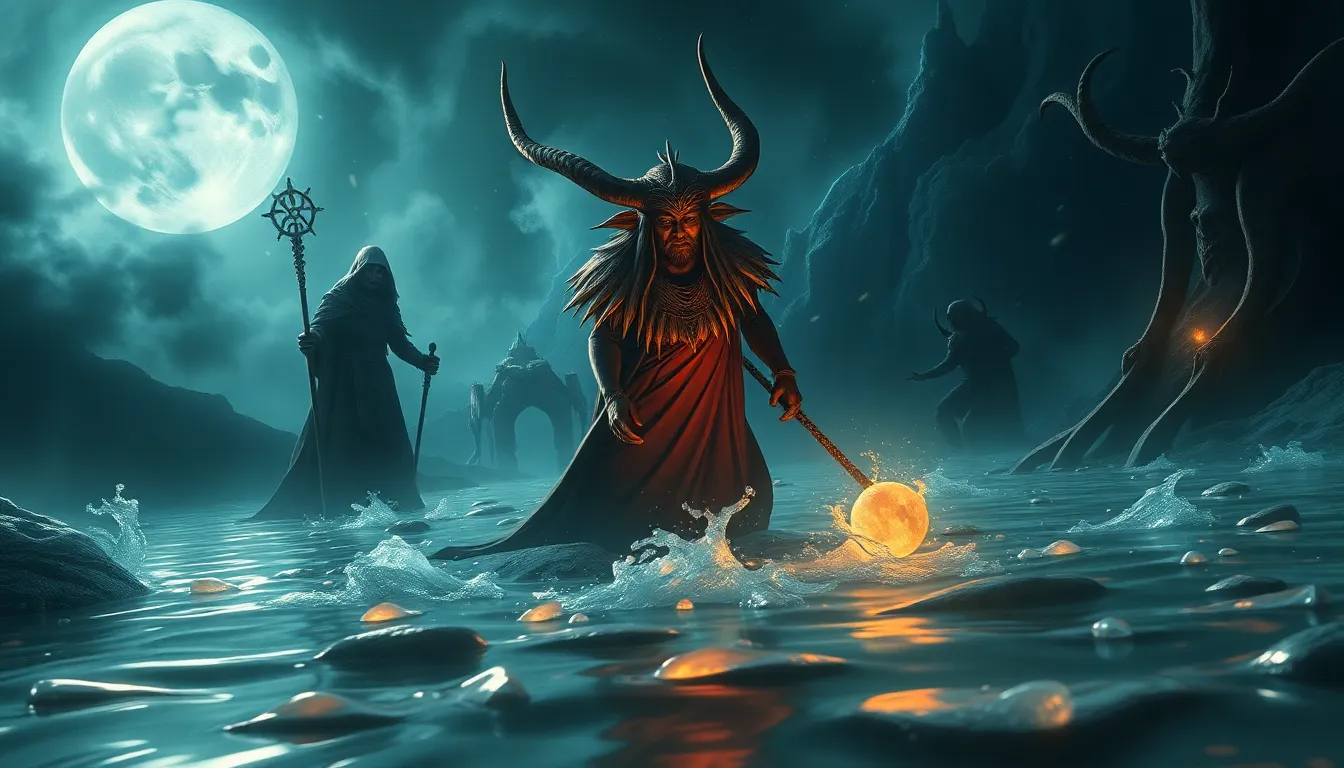Beneath the Surface: The Deeper Meaning of Trickster Tales
I. Introduction
Trickster tales are a fascinating genre of folklore that feature clever, mischievous characters known as tricksters. These figures often defy social conventions and authority, embodying a duality that makes them both creators and destroyers. Trickster tales are significant across various cultures, serving as reflections of societal values, human psychology, and the complexities of identity. The purpose of this article is to delve into the deeper meanings and themes within trickster tales, exploring their historical context, characteristics, and the lessons they impart.
II. Historical Context of Trickster Tales
The origins of trickster figures can be traced back to ancient mythology and folklore, where they have played crucial roles in narratives that explain the world and human behavior. These tales have evolved over time, adapting to the cultural contexts in which they are told.
- Native American Traditions: Figures like Coyote and Raven often embody trickster traits, serving as both creators and disruptors in their stories.
- African Folklore: Anansi the Spider is a well-known trickster who teaches moral lessons through his cunning antics.
- European Folklore: Characters like Loki from Norse mythology and Puck from English folklore illustrate the trickster’s role in challenging the status quo.
Throughout history, trickster tales have maintained their relevance, offering insights into the human condition and societal norms.
III. Characteristics of Trickster Figures
Tricksters share several common traits and behaviors that define their role in narratives:
- Cleverness: Tricksters are often depicted as highly intelligent, using their wit to outsmart others.
- Resourcefulness: They possess an uncanny ability to navigate challenges and exploit situations to their advantage.
- Humor: Humor plays a critical role in trickster tales, often serving as a vehicle for subversion and critique.
The duality of tricksters is essential to their character; they can create and destroy, often leading to chaos that ultimately results in new order. This complexity is what makes trickster narratives so compelling.
IV. Themes Explored in Trickster Tales
Trickster tales explore several profound themes:
- Subversion of Social Norms: Tricksters challenge societal expectations and authority, encouraging audiences to question the status quo.
- Tension Between Order and Chaos: These tales illustrate the delicate balance between stability and disorder, often highlighting the necessity of both in society.
- Exploration of Identity: Tricksters often grapple with issues of identity and cultural values, reflecting the complexities of human experience.
V. Psychological Interpretation of Trickster Tales
Carl Jung identified the trickster as an important archetype in the collective unconscious. Tricksters symbolize the unconscious mind, representing the chaotic, unpredictable aspects of human nature. Their stories mirror human behavior and societal issues, allowing audiences to confront uncomfortable truths in a humorous or light-hearted manner.
VI. Trickster Tales as Social Commentary
Trickster tales are powerful tools for social commentary, reflecting societal norms and expectations while critiquing power structures:
- Reflection of Societal Norms: Tricksters often embody the values and contradictions of their cultures, acting as a mirror to society.
- Critique of Power Structures: Through their antics, tricksters challenge authority figures and expose injustices, prompting audiences to reconsider their beliefs.
- Contemporary Examples: Modern literature and media continue to utilize trickster figures, presenting them in new contexts and narratives.
VII. Trickster Tales Across Cultures
A comparative analysis of trickster tales reveals unique cultural adaptations and meanings:
- Native American Tricksters: Often embody nature and spirituality, teaching lessons about balance and respect.
- African Tricksters: Frequently serve as teachers, using humor to impart wisdom and moral lessons.
- European Tricksters: Often reflect societal issues, using satire to critique politics and social norms.
The universal appeal of the trickster archetype transcends cultural boundaries, showcasing the shared human experience.
VIII. The Role of Trickster Tales in Education and Moral Lessons
Trickster tales serve as effective teaching tools, imparting moral lessons through storytelling:
- Storytelling as Education: These narratives engage audiences, making complex ideas accessible and relatable.
- Moral Ambiguity: Trickster behavior often exists in a gray area, prompting audiences to reflect on ethics and consequences.
- Promoting Critical Thinking: The unpredictable nature of trickster tales encourages problem-solving and creative thinking.
IX. Modern Interpretations and Adaptations
Contemporary literature and film have seen a resurgence of trickster elements, highlighting their relevance in today’s society:
- Trickster Figures in Modern Media: Characters like Deadpool and the Joker embody trickster traits, challenging traditional narratives.
- Resurgence in Storytelling: Modern authors and filmmakers are reinterpreting trickster tales to address current social issues.
- Relevance of Trickster Tales: The themes of subversion and chaos resonate deeply in today’s complex world.
X. Conclusion
Trickster tales offer a rich tapestry of deeper meanings, reflecting the complexities of human nature, societal norms, and cultural values. Their enduring legacy in human culture serves as a reminder of the power of storytelling to challenge, educate, and entertain. As we continue to explore and appreciate these narratives, we uncover the timeless wisdom they impart, inviting us to embrace the duality of creation and destruction that exists within us all.



